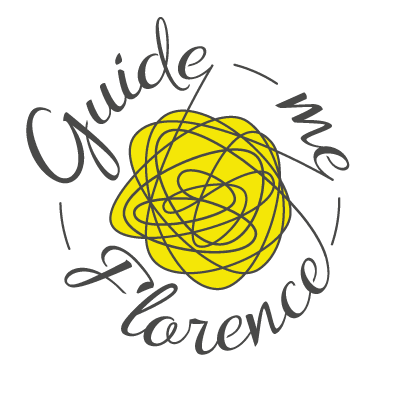- agata@guidemeflorence.com
- +39 348 135 1329
- Monday – Saturday 9 AM – 9 PM
Life in Tuscany has its own regular rhythm dictated by the changes of seasons, the sequence of feasts and holidays.
In Italy the winter period starts with the ponte (literally “bridge”, a long weekend) of 8th December, the feast of the Immaculate Conception. The winter atmosphere is already there, and we start to think about Christmas and Christmas gifts. During this weekend people often travel to visit the traditional Christmas markets. In the air you start to feel the smell of roasted chestnuts, the Christmas trees are lighted up and the cities shine at night thanks to the colourful decorations.
The history of Carnival in Europe
Few weeks later the Christmas comes and, as the schools remain closed until the Epiphany on 6th January, many Italians use this holiday to travel around the country. This is the only winter holiday that the school children get, thus many families go skiing or organize cultural trips to Rome, Milan, Florence and other Italian cities. On 7th January children and students go back to school and the life goes back its regular rhythm. Fortunately, soon after another festivity begins: the carnival!
In the past, the period of carnival was much more important than it is today. Its roots go back to the Roman times and to the festivities in honour of Dionysius and Saturn, during which the traditional social order was inverted, and mockery and dissipation were allowed. The Christian tradition absorbed a part of these rituals and “tamed” them allowing a period of diversion, intemperance and gluttony just before the beginning of Lent.
The Carnival in Venice
Today very little remains from these ancient traditions, but the carnival in Venice can give you some idea about what this feast was in the past. Today, the Venetian carnival lasts around fifteen days and all the celebrations concentrate during the last days before the Ash Wednesday.
In the past, during the carnival the Venetians abandoned all their everyday activities and dedicated themselves to the amusements of every kind. They built stages in the main campi (squares), such as San Marco, and along the Riva degli Schiavoni. People watched the shows of jugglers, acrobats, dancers and musicians.
Today, the Venetian carnival has its program, which you will find here, and it is all very well organized. But the locals continue to observe some of the medieval traditions such as the masquerade. Once, the masquerade allowed the overturn of the social roles and guaranteed anonymity in a society with very rigid social conventions and rules. Today, it is all made for fun and amusement.
Coming to Florence?
Download my free guide to Florence “Art and the City. Two Squares in Five Masterpieces”!

Fat and deep-fried Carnival cakes!
At the same time, during the carnival, people would eat very fat, often deep-fried food, which was not available on a regular basis. They would slaughter their pigs and eat meat, which was a very rare guest on the European tables until 1950s..
The tradition of serving deep-fried sweet treats during the carnival persisted until today not only in Venice but in whole Italy and in many other European countries. This is why, in Florence, with the end of the Christmas period, when all the panettoni and pandori disappear from the shelves of the bakeries, they are immediately replaced by frittelle, cenci and schiacciata fiorentina, the classics of the carnival.
Frittelle di riso
The frittelle di riso are little rice fritters, soft and fluffy, very dangerous if you are on diet! They are best when still warm and crisp, covered with the icing sugar. The frittelle are typical sweets for St. Joseph’s Day (which is also Italian Father’s Day) celebrated on 19th March.
One of the most famous stalls that sells the frittelle directly from the fryer is the one by the frittellaio “Savelli” in Piazza del Campo in Siena. It opens every year from 1 to 20 February in a little wooden hut located at the corner of the square. If you are so lucky to visit Siena in February, do not miss the frittelle! I leave you here the recipe for frittelle from Emiko Davies’ blog.
Cenci
The cenci are a sort of fried dough. They are typical carnival sweets in many European countries. In Poland we call them chrust (in the South) or faworki (in Warsaw). In Italy they are called crostoli in Trentino, sfrappole in Bologna and cenci in Tuscany. They are very, very sweet and crisp. If you want to try to do them yourself here you will find a recipe by Giulia Scarpaleggia, one of my favourite food bloggers.

Schiacciata fiorentina
In Florence you will find one more typically Tuscan carnival cake, the schiacciata fiorentina, the Florentine sweet flatbread. It has nothing to do with the salty schiacciata as it is a soft, sweet cake, flavored with orange and vanilla. It is always covered with the icing sugar with the Florentine iris at the top and today some bakeries serve it filled with custard.
This cake originates from a simple bread enriched with lard. During the celebrations of the carnival the abundance of meat required the slaughter of many pigs and this is why the lard was easily accessible. Thanks to the big quantities of lard at hand, most of the carnival cakes are fried (today we fry them in vegetable oil but it the past they would use lard) or are enriched with lard, like the schiacciata. The schiacciata fiorentina is simply delicious, so remember to try it when you are here in January or February.
Happy Carnival!
Planning your stay in Florence? Contact me! I will be happy to organize your private tours and museum visits!



